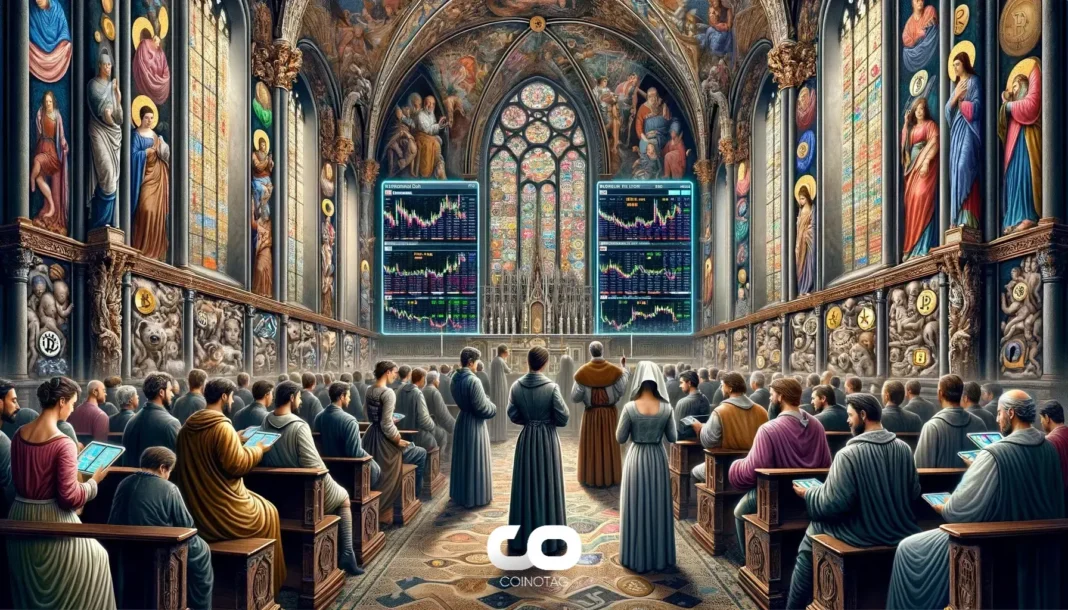| COINOTAG recommends • Exchange signup |
| 💹 Trade with pro tools |
| Fast execution, robust charts, clean risk controls. |
| 👉 Open account → |
| COINOTAG recommends • Exchange signup |
| 🚀 Smooth orders, clear control |
| Advanced order types and market depth in one view. |
| 👉 Create account → |
| COINOTAG recommends • Exchange signup |
| 📈 Clarity in volatile markets |
| Plan entries & exits, manage positions with discipline. |
| 👉 Sign up → |
| COINOTAG recommends • Exchange signup |
| ⚡ Speed, depth, reliability |
| Execute confidently when timing matters. |
| 👉 Open account → |
| COINOTAG recommends • Exchange signup |
| 🧭 A focused workflow for traders |
| Alerts, watchlists, and a repeatable process. |
| 👉 Get started → |
| COINOTAG recommends • Exchange signup |
| ✅ Data‑driven decisions |
| Focus on process—not noise. |
| 👉 Sign up → |
- Can the XRP Ledger (XRPL) support multiple tokens with identical names? Ripple CTO David Schwartz recently tackled this intriguing question.
- Schwartz’s insights delve into the original design principles of the XRPL, particularly its approach to handling USD-denominated tokens.
- The explanation underscores the concept of token fungibility within the XRPL, ensuring smooth transactions across the ecosystem.
An in-depth analysis of XRPL’s design reveals how it manages token naming and fungibility to streamline USD-denominated transactions.
Initial Design Intent for XRP Ledger: A Focus on Fungibility
In recent discussions, David Schwartz, Chief Technology Officer of Ripple, provided clarity on an essential design feature of the XRP Ledger (XRPL): the treatment of tokens bearing the same name. His insights have shed light on the XRPL’s initial architectural decisions, emphasizing the system’s capacity to manage USD-denominated tokens as fungible entities effectively.
The Role of Common Identifiers in Ensuring Token Fungibility
Schwartz noted that the XRPL was deliberately designed to treat all USD tokens as uniformly fungible by assigning them a common identifier “USD.” This approach simplifies transactions, ensuring that all USD-denominated tokens are interchangeable. Such fungibility is crucial for the seamless execution of payments and settlements across the network, offering both payers and payees the flexibility to regard all supported USD tokens as equivalent.
Beyond XRP: XRPL’s Support for Diverse Token Types
XRPL’s capabilities extend beyond merely dealing with XRP. The ledger supports a range of other assets, including fungible standard tokens and non-fungible tokens (NFTs). While fungible tokens allow for interchangeable units, NFTs represent unique items, from digital artworks to in-game assets. Additionally, stablecoins, another critical token type on XRPL, are backed by real-world value held outside the ledger, providing stable value representation on the XRPL.
| COINOTAG recommends • Professional traders group |
| 💎 Join a professional trading community |
| Work with senior traders, research‑backed setups, and risk‑first frameworks. |
| 👉 Join the group → |
| COINOTAG recommends • Professional traders group |
| 📊 Transparent performance, real process |
| Spot strategies with documented months of triple‑digit runs during strong trends; futures plans use defined R:R and sizing. |
| 👉 Get access → |
| COINOTAG recommends • Professional traders group |
| 🧭 Research → Plan → Execute |
| Daily levels, watchlists, and post‑trade reviews to build consistency. |
| 👉 Join now → |
| COINOTAG recommends • Professional traders group |
| 🛡️ Risk comes first |
| Sizing methods, invalidation rules, and R‑multiples baked into every plan. |
| 👉 Start today → |
| COINOTAG recommends • Professional traders group |
| 🧠 Learn the “why” behind each trade |
| Live breakdowns, playbooks, and framework‑first education. |
| 👉 Join the group → |
| COINOTAG recommends • Professional traders group |
| 🚀 Insider • APEX • INNER CIRCLE |
| Choose the depth you need—tools, coaching, and member rooms. |
| 👉 Explore tiers → |
The Evolutionary Journey of the XRP Ledger
The XRPL’s journey began in 2011, spearheaded by David Schwartz, Jed McCaleb, and Arthur Britto. Inspired by the foundational work of Bitcoin, the trio aimed to create an enhanced version of the digital asset, specifically optimized for payment transactions. Their shared vision culminated in a more sustainable, efficient, and adaptable ledger system, laying the groundwork for the robust and versatile infrastructure we see today.
Conclusion
David Schwartz’s recent elucidations on the XRPL’s token handling mechanisms underscore its sophisticated design aimed at ensuring fungibility and versatility. By standardizing token identifiers for USD-denominated entities, the XRPL promotes smoother, more reliable transactions. As the landscape of digital assets continues to evolve, these foundational principles of the XRPL highlight its enduring commitment to enhancing payment efficiencies and fostering innovation within the crypto ecosystem.
| COINOTAG recommends • Exchange signup |
| 📈 Clear interface, precise orders |
| Sharp entries & exits with actionable alerts. |
| 👉 Create free account → |
| COINOTAG recommends • Exchange signup |
| 🧠 Smarter tools. Better decisions. |
| Depth analytics and risk features in one view. |
| 👉 Sign up → |
| COINOTAG recommends • Exchange signup |
| 🎯 Take control of entries & exits |
| Set alerts, define stops, execute consistently. |
| 👉 Open account → |
| COINOTAG recommends • Exchange signup |
| 🛠️ From idea to execution |
| Turn setups into plans with practical order types. |
| 👉 Join now → |
| COINOTAG recommends • Exchange signup |
| 📋 Trade your plan |
| Watchlists and routing that support focus. |
| 👉 Get started → |
| COINOTAG recommends • Exchange signup |
| 📊 Precision without the noise |
| Data‑first workflows for active traders. |
| 👉 Sign up → |
| COINOTAG recommends • Members‑only research |
| 📌 Curated setups, clearly explained |
| Entry, invalidation, targets, and R:R defined before execution. |
| 👉 Get access → |
| COINOTAG recommends • Members‑only research |
| 🧠 Data‑led decision making |
| Technical + flow + context synthesized into actionable plans. |
| 👉 Join now → |
| COINOTAG recommends • Members‑only research |
| 🧱 Consistency over hype |
| Repeatable rules, realistic expectations, and a calmer mindset. |
| 👉 Get access → |
| COINOTAG recommends • Members‑only research |
| 🕒 Patience is an edge |
| Wait for confirmation and manage risk with checklists. |
| 👉 Join now → |
| COINOTAG recommends • Members‑only research |
| 💼 Professional mentorship |
| Guidance from seasoned traders and structured feedback loops. |
| 👉 Get access → |
| COINOTAG recommends • Members‑only research |
| 🧮 Track • Review • Improve |
| Documented PnL tracking and post‑mortems to accelerate learning. |
| 👉 Join now → |







